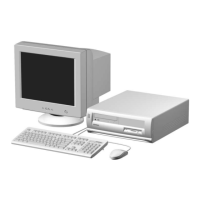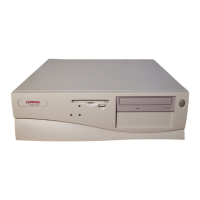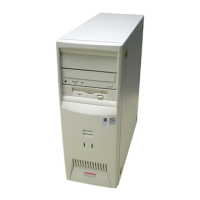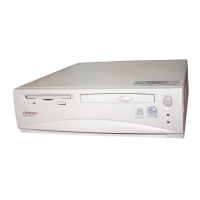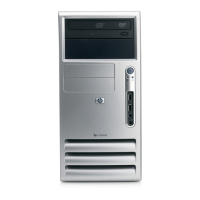Chapter 6 Audio Subsystem
Compaq Deskpro 4000 and 6000 Personal Computers
featuring the Pentium II Processor
First Edition - October 1997
6-4
6.2.1 PCM AUDIO PROCESSING
The audio subsystem uses pulse code modulation (PCM) for processing audio that is applied from
external sources to the Mic In and Line In input jacks, as well as audio from an installed CD-
ROM drive. The PCM method is also used in playback of .WAV file data commonly used in
Windows applications.
6.2.1.1 ADC Operation
The Analog-to-Digital Converter (ADC) receives an analog signal and, using pulse code
modulation (PCM) converts it into digital data that can be handled by normal logic circuitry. The
conversion process consists of measuring (sampling) the analog signal at intervals to determine
the amplitude and frequency (see Figure 6-2). The frequency of sampling intervals is a
programmable parameter known as the sampling rate. The higher the sampling rate, the more
accurate the digital representation will be.
Figure 6–2.
Analog Signal Sampling/Quantizing
Each sample is quantized into a digital code that specifies the voltage level of the analog signal at
that particular time. The quantizing format options are as follows:
Mono or stereo
8- or 16-bit
Signed or unsigned
S0 S1 S2 S3 S4 S5 S6 S7 S8 S9 S10
Time
8-Bit
FFh
80h
00h
16-Bit
FFFF
8000h
0000h
Quantized Values
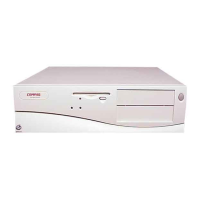
